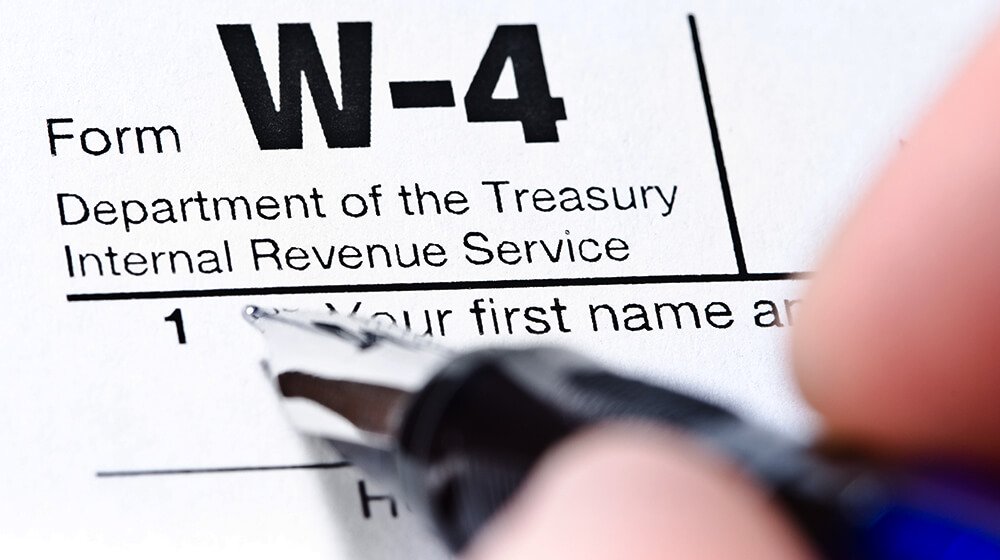Feature your business, services, products, events & news. Submit Website.
Breaking Top Featured Content:
New W-4 Form: 10 Things Small Businesses Need to Know


Due to changes in various tax rules made by the Tax Cuts and Jobs Act, the IRS has completely redesigned Form W-4 for 2020, which is used for income tax withholding purposes. The new form is intended to be more transparent and produce greater accuracy in withholding. Employers need to know when and how to incorporate the new form into their payroll practices.
2020 Form W-4 Changes
1. There’s a New Title
The new 2020 W-4 form called Employee’s Withholding Certificate, replaces the old W-4, which was called Employee’s Withholding Allowance Certificate. The reason for the name change is the fact that former withholding allowances were tied to personal and dependency exemptions, which are not in effect in 2018 through 2025.
2. The Form Uses a 4 Step Process
In the past, there were various worksheets used to figure withholding allowances. Now, most of the worksheets have been replaced by a simple 4-step process on the form:
- Imputing personal information, including filing status
- Providing information about having multiple jobs (there’s a worksheet for this) or a working spouse
- Entering the number of dependents for whom a federal tax credit can be claimed
- Providing information about other income, deductions (there’s a worksheet for this), or extra withholding desired
3. An App Fine-tunes Withholding
Employees can more accurately figure their withholding using an online Tax Withholding Estimator, which is a 6-step question and answer format, to be sure the amount being withheld will cover their tax liability. This helps employees avoid overpaying taxes, which is effectively an interest-free loan to the government until a return is filed to obtain a refund. It also avoids the situation of greatly underpaying taxes and becoming subject to a penalty.
4. Employees Need More Information to Figure their Withholding
According to SHRM, the new W-4 is designed to make it easier for employees. Still, they need to provide more information than in the past in order to complete their W-4, including:
- Pay statements for the employee and, if married, the employee’s spouse
- Other sources of income
- Dependents for whom a certain tax credit can be taken
- The most recent tax return
5. Employers Need to Plan for More Time for On-boarding
Because new employees need to gather more information in order to complete the W-4, expect that this will take more time to bring a new employee on board.
Employers should plan to have new forms available for new employees to complete, as well as for existing employees who want to make changes.
6. Know which Employees must Complete a New Form
Any employee hired on or after January 1, 2020, must complete the new form. So too must:
- An employee who previously worked for you but has been rehired after 2019.
- An employee whose been on the payroll prior to 2020 but wants to make changes in withholding.
Employees who began work before 2020 are not required to complete a new form. Employers simply withhold from their pay based on their old W-4 on file.
7. Employers can Ask All Employees to Submit New Forms
You can ask, but not require, current employees to submit new forms. The request must explain that:
- They aren’t required to furnish you with a new form
- If they don’t furnish you with a new form, you’ll continue to withhold based on their valid old form on file.
The American Payroll Association has a sample letter that can be used to explain to employees why a new form may be desirable.
8. Employers with In-house Payroll have New Guidance
There’s a new IRS Publication 15-T, Federal Income Tax Withholding Methods, to enable employers to figure income tax withholding under either of two methods—the Percentage Method or the Wage Bracket Method—using both the new W-4 as well as the old one.
And there’s a new Income Tax Withholding Assistant for Employers, which is a downloadable spreadsheet to help small businesses easily transition to the redesigned withholding system. Be sure to save a separate copy of the spreadsheet for each employee, because it shows the W-4 version the employee used, as well as other withholding-relevant information.
9. Employers Using a Payroll Service Should Provide it with Completed Forms
Be sure to submit completed W-4s to the payroll service so that it can properly figure withholding.
10. Withholding for Employees Who Fail to Complete the New Form
Any employee hired and first paid after 2019 who fails to complete the W-4 (an employee cannot be forced to do so) is treated as a single filer with no adjustments.
Conclusion
Employers should remember to retain employee payroll records, including completed W-4s, for a minimum of 4 years after filing employer tax returns for the fourth quarter of the year.
Image: Depositphotos.com
This article, “New W-4 Form: 10 Things Small Businesses Need to Know” was first published on Small Business Trends
